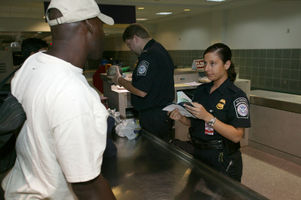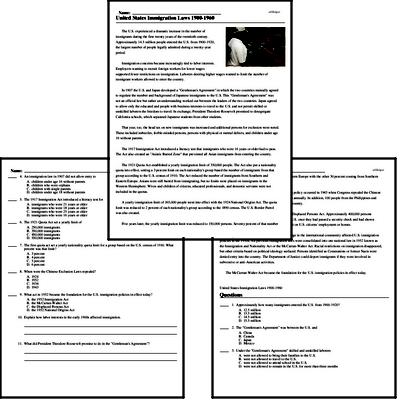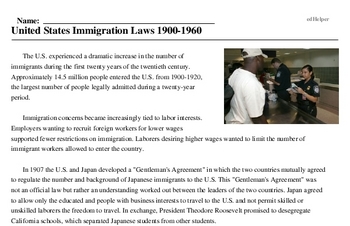United States Immigration Laws 1900-1960
The U.S. experienced a dramatic increase in the number of immigrants during the first twenty years of the twentieth century. Approximately 14.5 million people entered the U.S. from 1900-1920, the largest number of people legally admitted during a twenty-year period.
Immigration concerns became increasingly tied to labor interests. Employers wanting to recruit foreign workers for lower wages supported fewer restrictions on immigration. Laborers desiring higher wages wanted to limit the number of immigrant workers allowed to enter the country.
In 1907 the U.S. and Japan developed a "Gentleman's Agreement" in which the two countries mutually agreed to regulate the number and background of Japanese immigrants to the U.S. This "Gentleman's Agreement" was not an official law but rather an understanding worked out between the leaders of the two countries. Japan agreed to allow only the educated and people with business interests to travel to the U.S. and not permit skilled or unskilled laborers the freedom to travel. In exchange, President Theodore Roosevelt promised to desegregate California schools, which separated Japanese students from other students.
That year, too, the head tax on new immigrants was increased and additional persons for exclusion were noted. These included imbeciles, feeble-minded persons, persons with physical or mental defects, and children under age 16 without parents.




